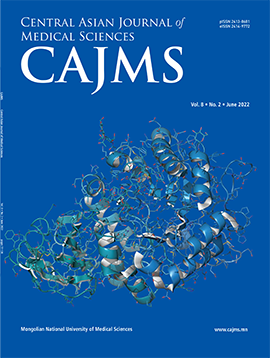Geographical Distribution of Tick-borne Encephalitis and Its Vectors in Mongolia, 2005-2016
DOI:
https://doi.org/10.24079/cajms.2017.11.006Keywords:
Tick-borne Encephalitis, Incidence, Seroprevalence, Ticks, MongoliaAbstract
Objectives: In the last several years, the incidence and fatality rates of tick-borne encephalitis (TBE) in Mongolia have been increasing with new cases being registered in areas without the main tick vector. Therefore, we sought to determine the geographical distribution of TBE in Mongolia. Methods: Data were analyzed on TBE virus prevalence of collected ticks and seroprevalence rate of TBE and TBE incidence rate among the human population from 2005 to 2016. Results: During this time, TBE incidence was 0.75 per 10,000 populations in Mongolia. Among 2,182 people investigated, seroprevalence rate was 14.6±10.9% (n=312) in 10 provinces and Ulaanbaatar city. The seroprevalence rate among the populations of Selenge, Bulgan and Khuvsgul provinces, which are home to the main tick vector I.Persulcatusis, were 1.8 times (CI 95% 1.5-2.3, p< 0.001) higher than other provinces where the tick species D.nuttalli and D.silvarumare found. The TBE virus prevalence of I.Persulcatus was 3.18%, D.nuttalli was 0.61% and D.silvarum was 2.9% among the 10,464 ticks sampled. Conclusion: Endemic areas of TBE are expanding from northern parts of the country where the main vector I. persulcatus is more common to steppe areas where the vector D. nuttalli is abundant.
Downloads
270
Downloads
Published
How to Cite
Issue
Section
License
Copyright (c) 2017 Mongolian National University of Medical Sciences

This work is licensed under a Creative Commons Attribution-NonCommercial 4.0 International License.




